1lumen selects and reviews products personally. We may earn affiliate commissions through our links, which help support our testing.
Fenix E-CP review
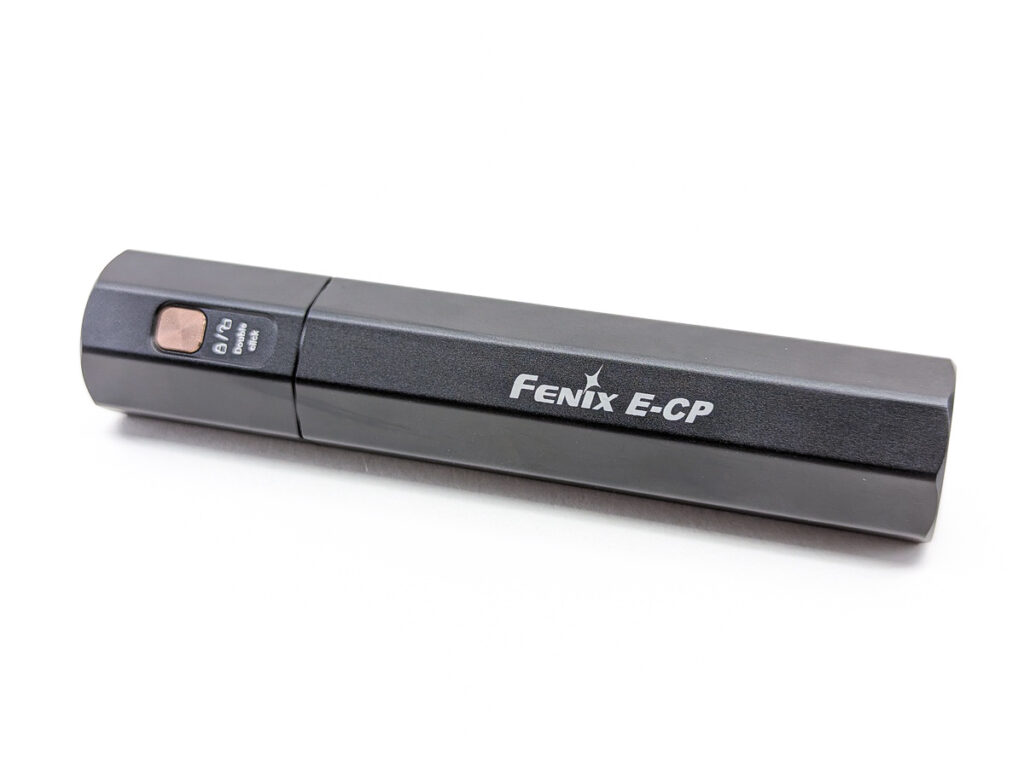
Fenix E-CP specifications
| Brand & Model | Fenix E-CP |
|---|---|
| Flashlight category | EDC / powerbank |
| LED | Luminus SST40 |
| Max. output | 1600 lumens |
| Max. beam distance | 222 meters |
| Max. beam intensity | 12,400 cd |
| Battery config. | Built-in |
| Onboard charging | USB-C |
| Modes | 5 |
| Blinkies | Strobe |
| Waterproof | IP68 |
| Review publication date | December 2022 |
Introduction:
Fenix makes a huge array of lights. In fact, they have an actual PDF catalog on their website (I imagine it’s probably also distributed in paper form as well) that is 48 pages long and chock-full of products ranging from tiny EDC lights all the way up to a couple really big boys that I’ve been fortunate enough to check out: the Fenix LR50R 12,000 lumen monstrosity and the Fenix HT30R 1500m throw LEP. If you need a light, chances are that Fenix will have a nice offering to fill that need.
By and large, I really like Fenix – my first “real” flashlight was a Fenix (the 187 lumen E25 model, if you’re curious). From my experience, Fenix lights are really well designed, they use quality materials and finishes, have great constant-current drivers, and publish truthful ANSI specs. I recently reviewed the small E18R V2.0 EDC light, the small-midsize PD25R, and the full-size PD36R Pro. This new light, the Fenix E-CP, is a pretty different light. As the “E” prefix suggests, this is part of Fenix’s EDC lineup. The big focus with the E-CP is its power bank functionality. But it’s not just a flashlight that can be used as a powerbank in a pinch – the power bank features are a front-runner.
Package quality.
The packaging for the Fenix E-CP is instantly recognizable as having come off the same line as the other Fenix models that I recently reviewed. They used the exact same design language and materials: a showy black and orange carton with a heavy-duty plastic tray inside. I think it’s great that Fenix is using consistent packaging as it helps drive brand recognition. Arranged in the tray was:
- Fenix E-CP
- Charging cable
- Lanyard
- Manual and other literature
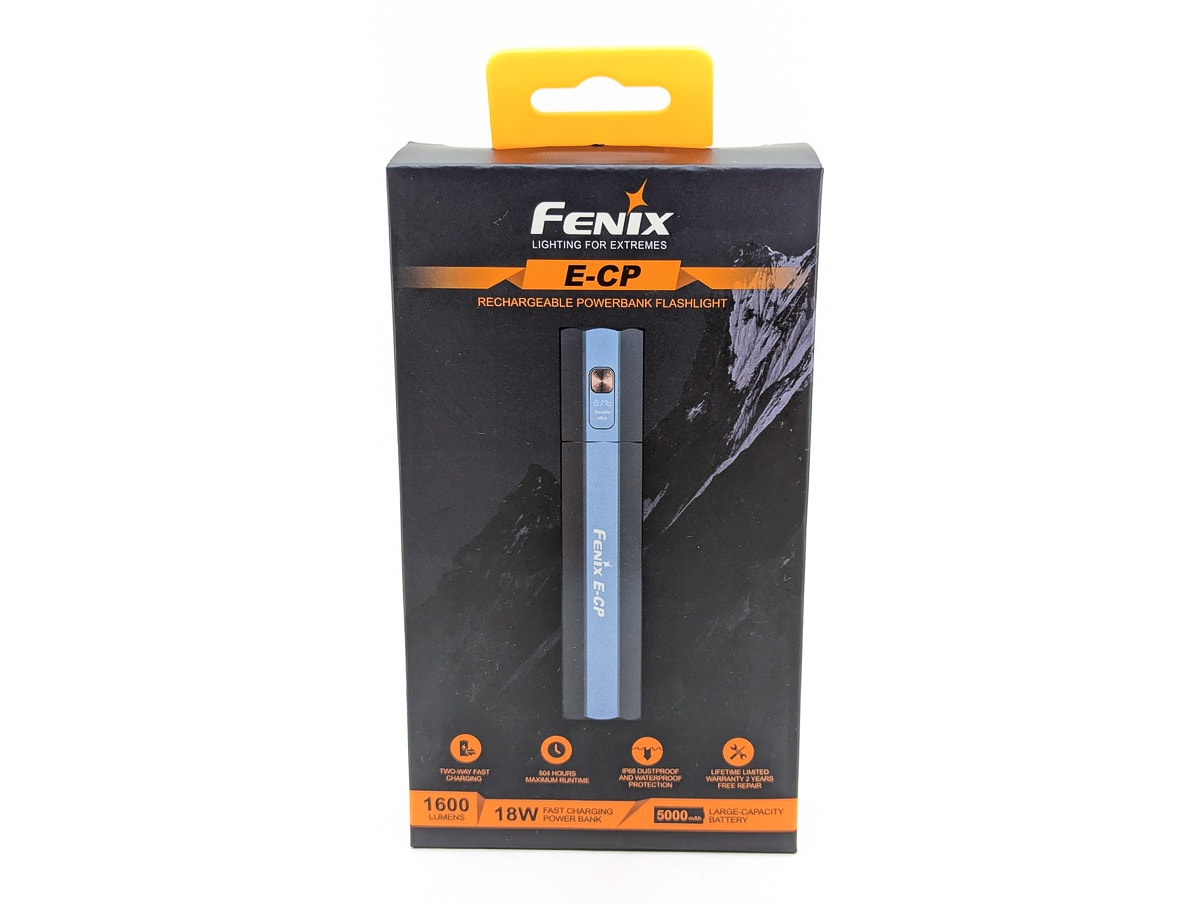
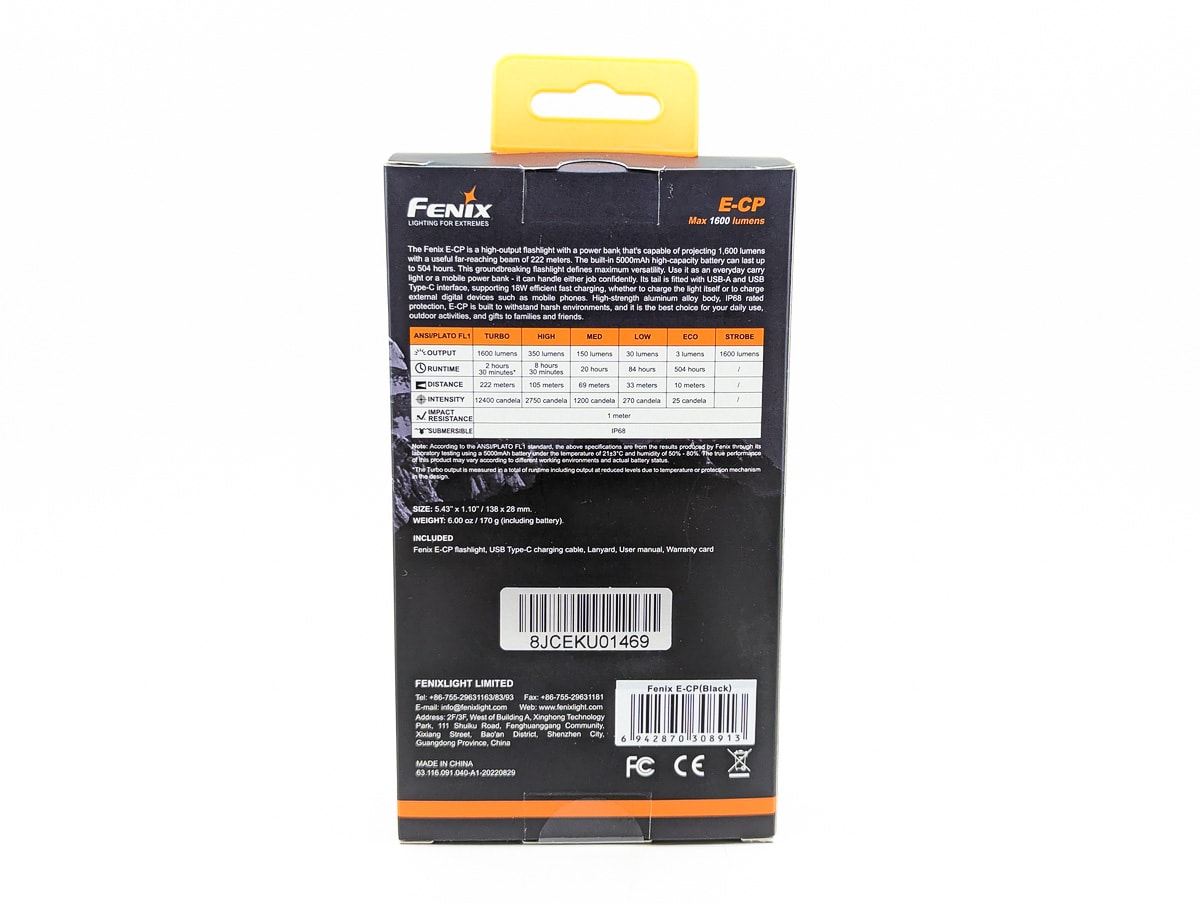
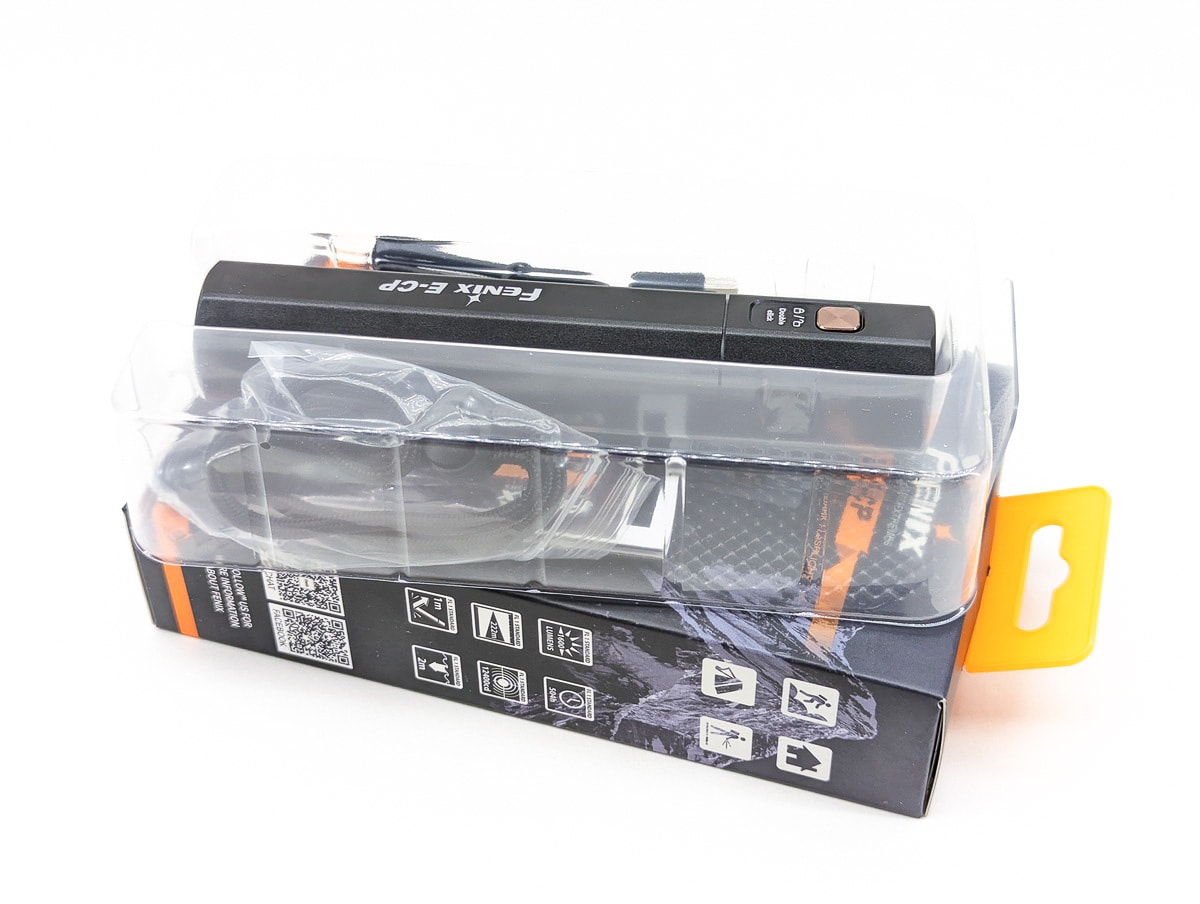
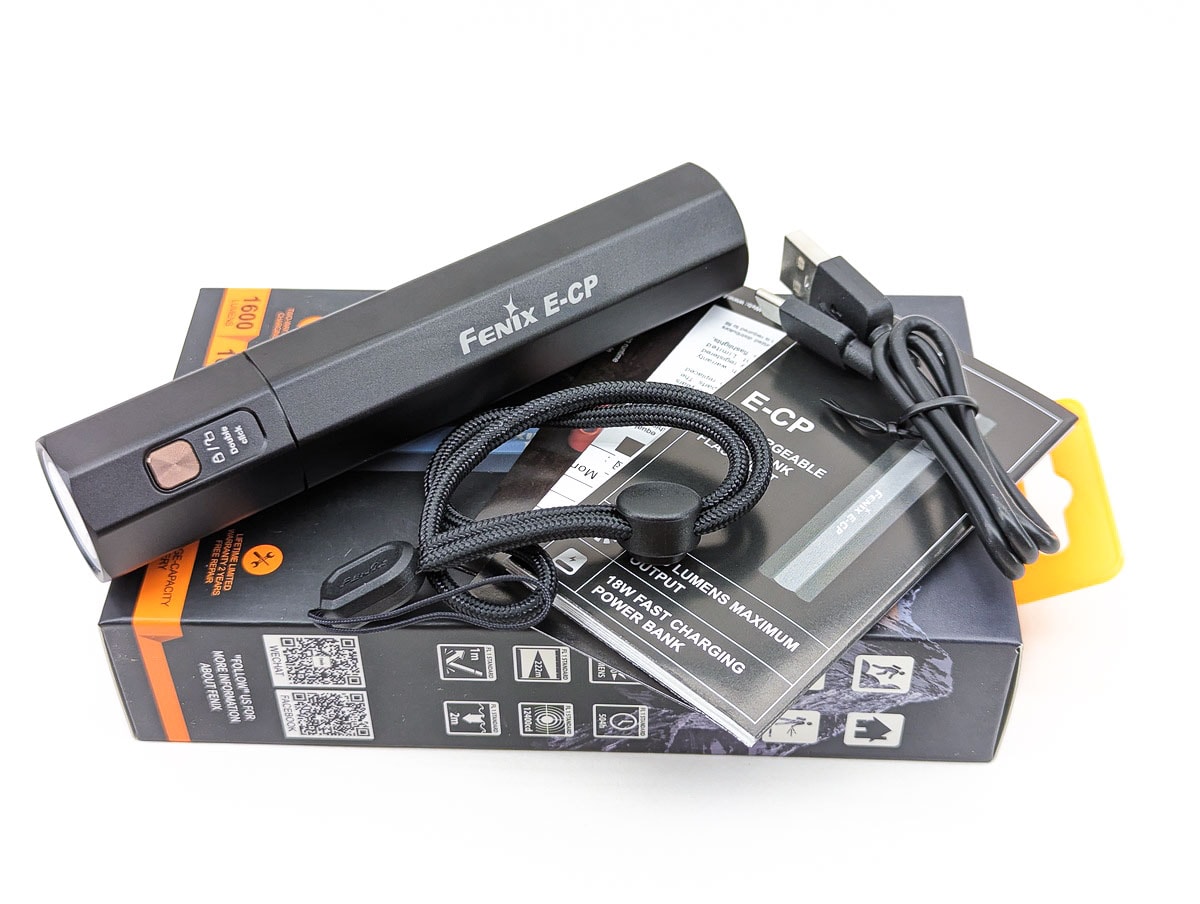
Flashlight in use
The design of the Fenix E-CP is fairly unique. It looks like someone lopped off a hunk of octagon bar stock. There’s no tapers, no heat sink fins, no tail caps to screw off… just a straight octagon tube. There’s not even a button on the tail to press. Rather, the lone button is a small rectangular e-switch situation towards the head of the light. The tail is occupied by a large rubber cap that is pretty much the size of the whole tail end. Underneath that cap are the battery indicator LEDs and charging / discharging ports. Because of the broad, flat tail, it does tail stand easily.
The octagon shape of the E-CP keeps it from rolling around at all. Which is good, considering there isn’t a pocket clip to keep it from rolling. The design of the light doesn’t allow for a pocket clip at all. Fenix did include a nice lanyard though.
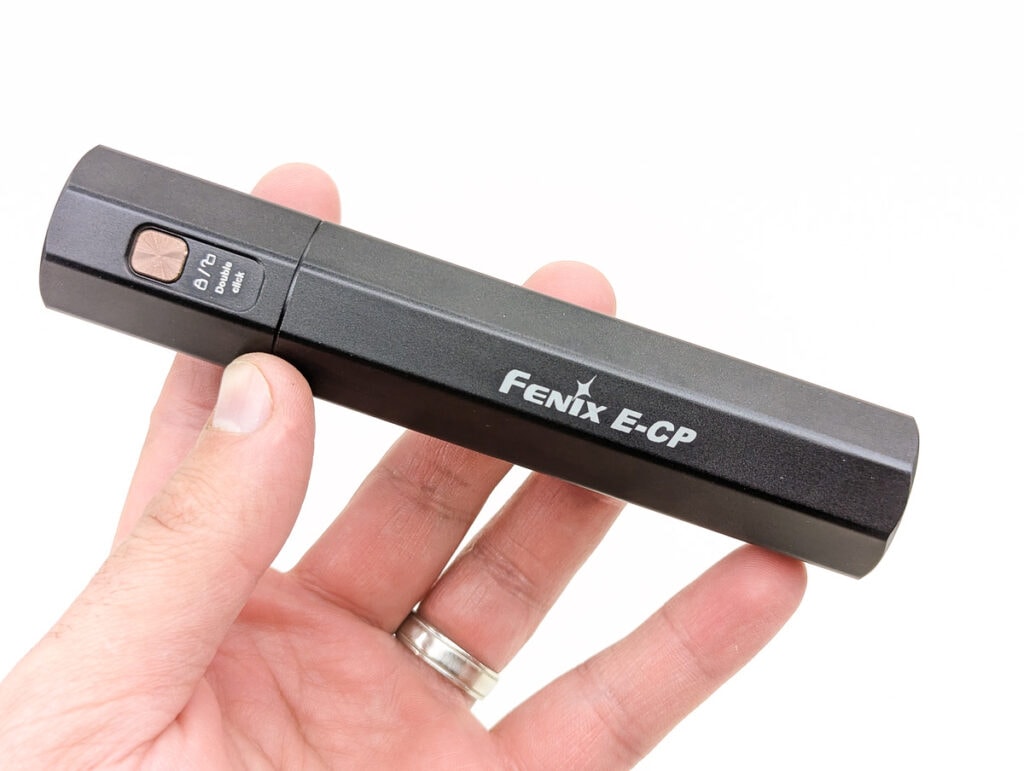
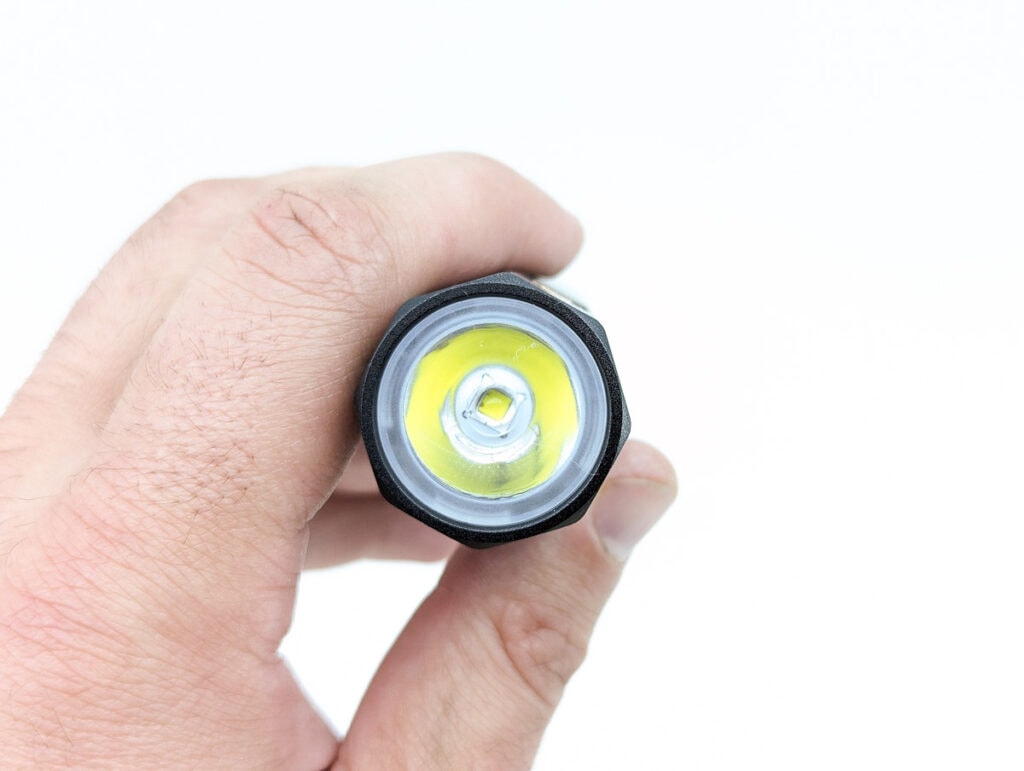
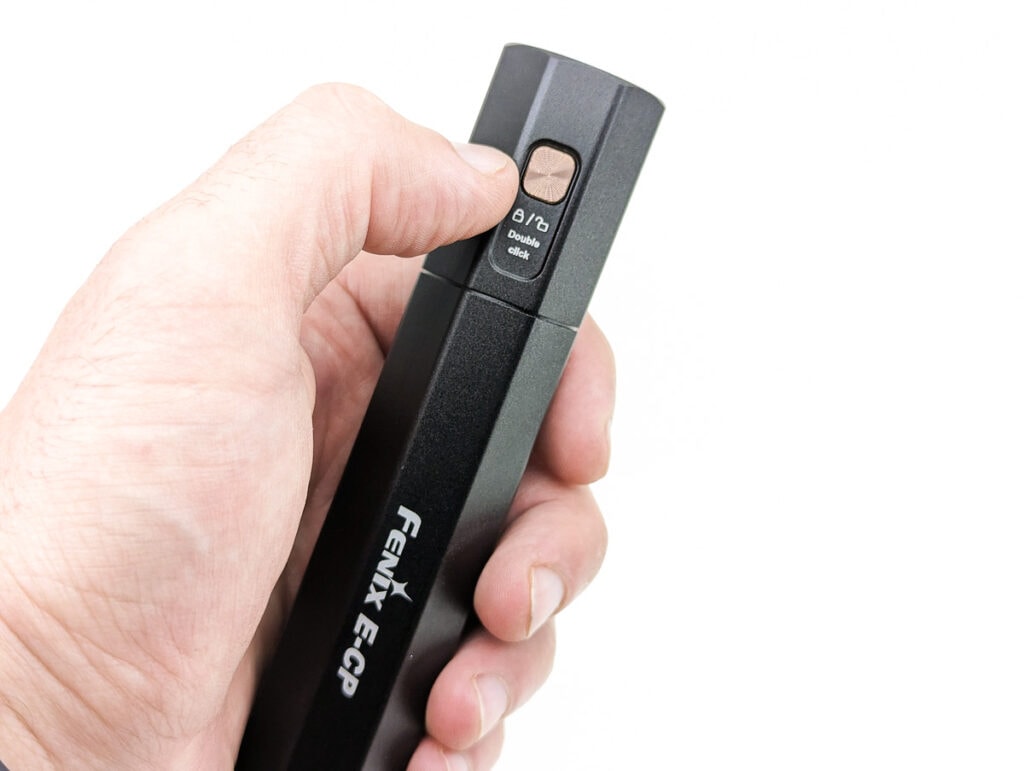
Build Quality, and Warranty
Fenix used A6061-T6 aluminum in the construction of the E-CP, then coated it in premium type III hard anodizing. The fit and finish look absolutely great, as I’ve come to expect from Fenix.
There’s no knurling to speak of. As mentioned earlier, there’s actually not much machining at all to talk about. The ends of the light are nicely chamfered, and everything is smooth and clean.
Warranty:
- 15 days from date of purchase: replacement from Fenix for manufacturing defects
- 5 year from date of purchase: free repairs
- Lifetime maintenance, with customer covering the cost of parts
- Extra 6 month warranty period for products registered on Fenix’s website
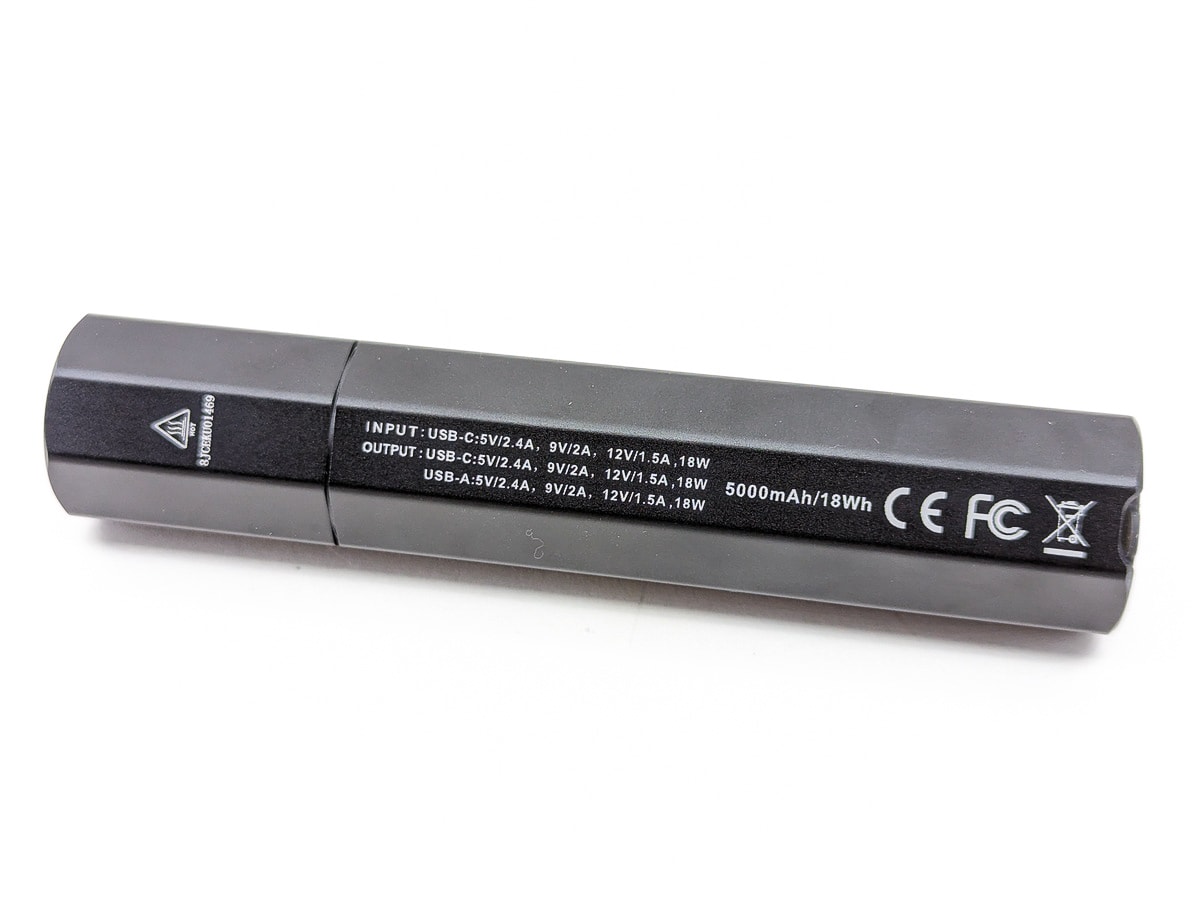
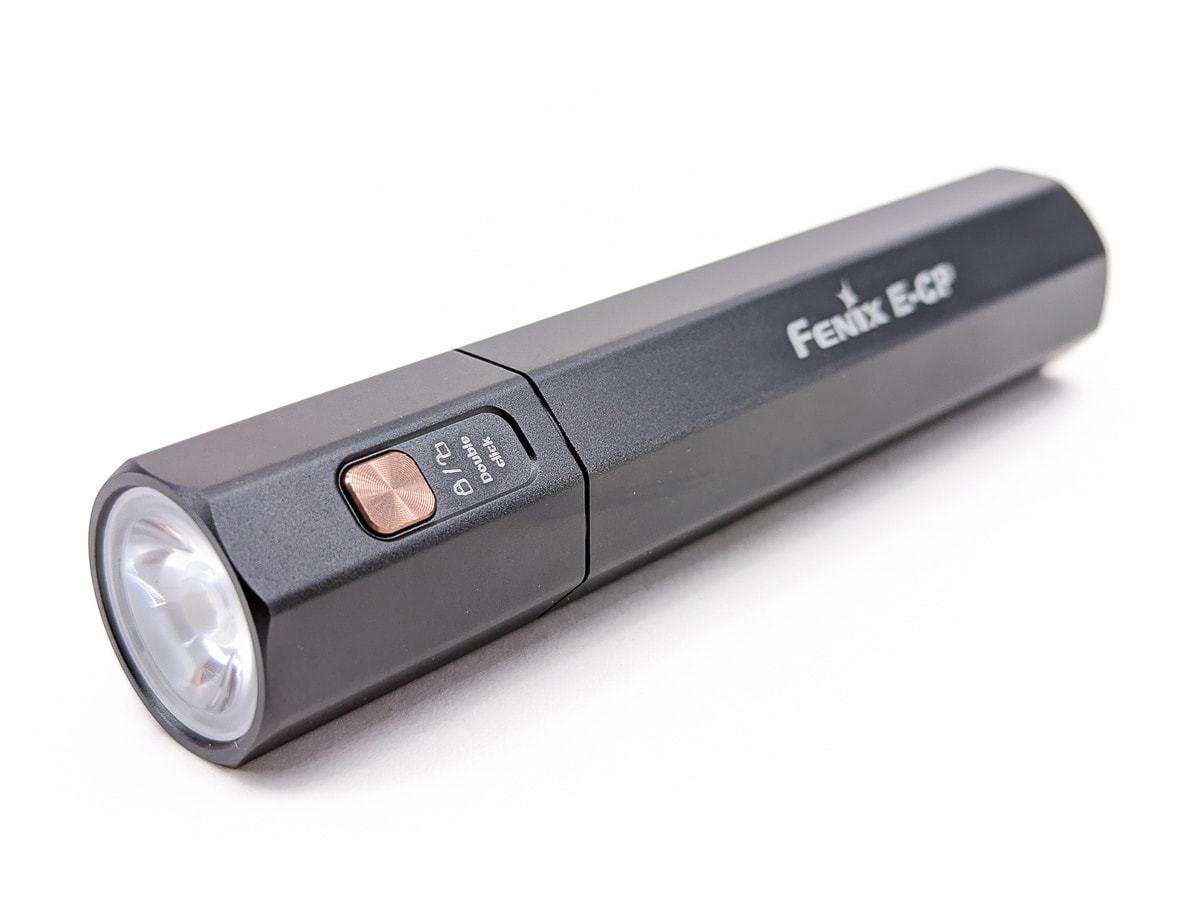
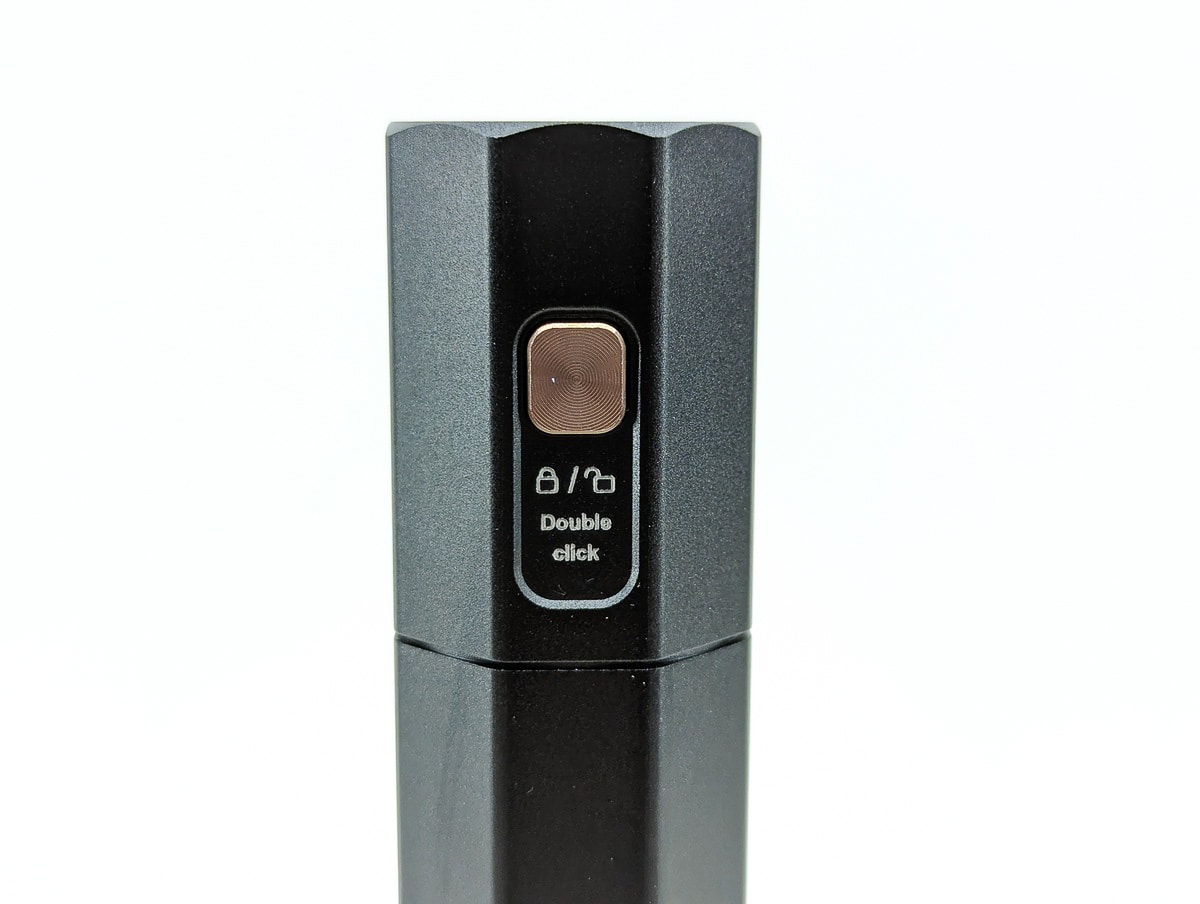
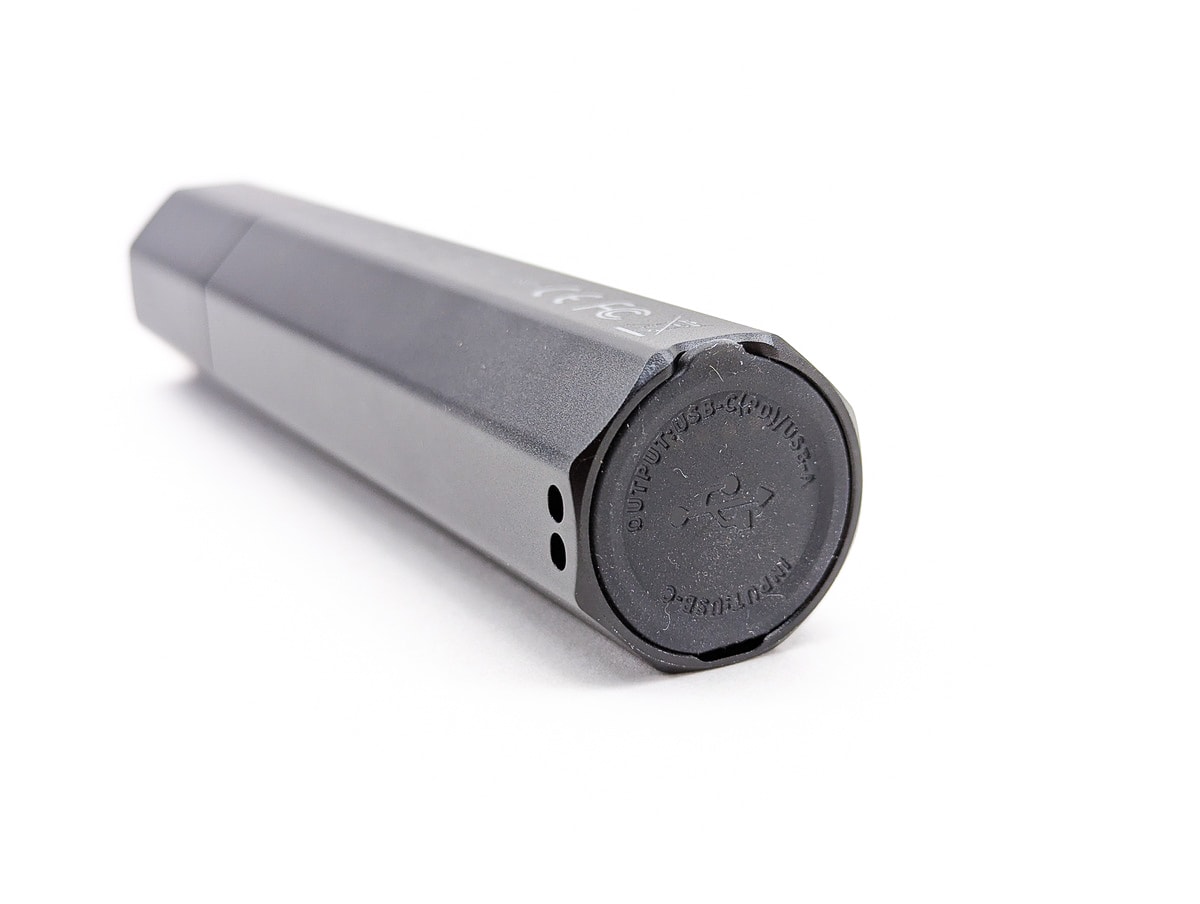
LED, Lens, Bezel, Beam, and Reflector
Fenix didn’t mention precisely what LED they used in the E-CP, but they did say that it’s a Luminus product. Looking at it through the optic and also based on the output figures, I’d say that it’s a 5000K SST40. There’s not much of a bezel to speak of. The LED shines through a TIR optic which is fitted almost flush with the end of the octagon tube. The optic provides a very smooth beam. As typical of TIRs, there’s a defined hotspot and minimal spill. Like most Luminus SST40 LEDs I’ve seen, the tint is definitely on the greenish side of things.
The Opple Light Master provided this info (Turbo, 3 meters):
- CCT: 5014K
- CRI: 64.1 Ra
- DUV: +0.0092
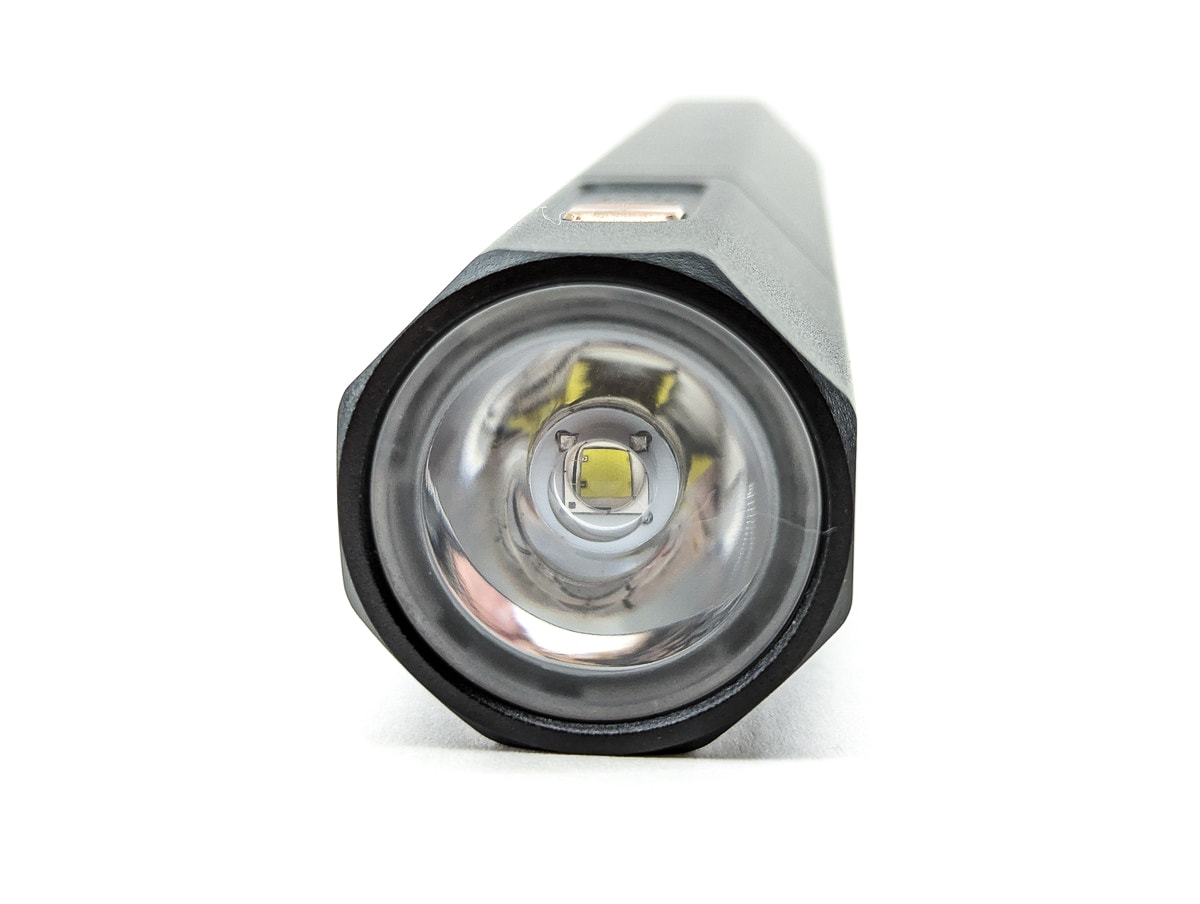
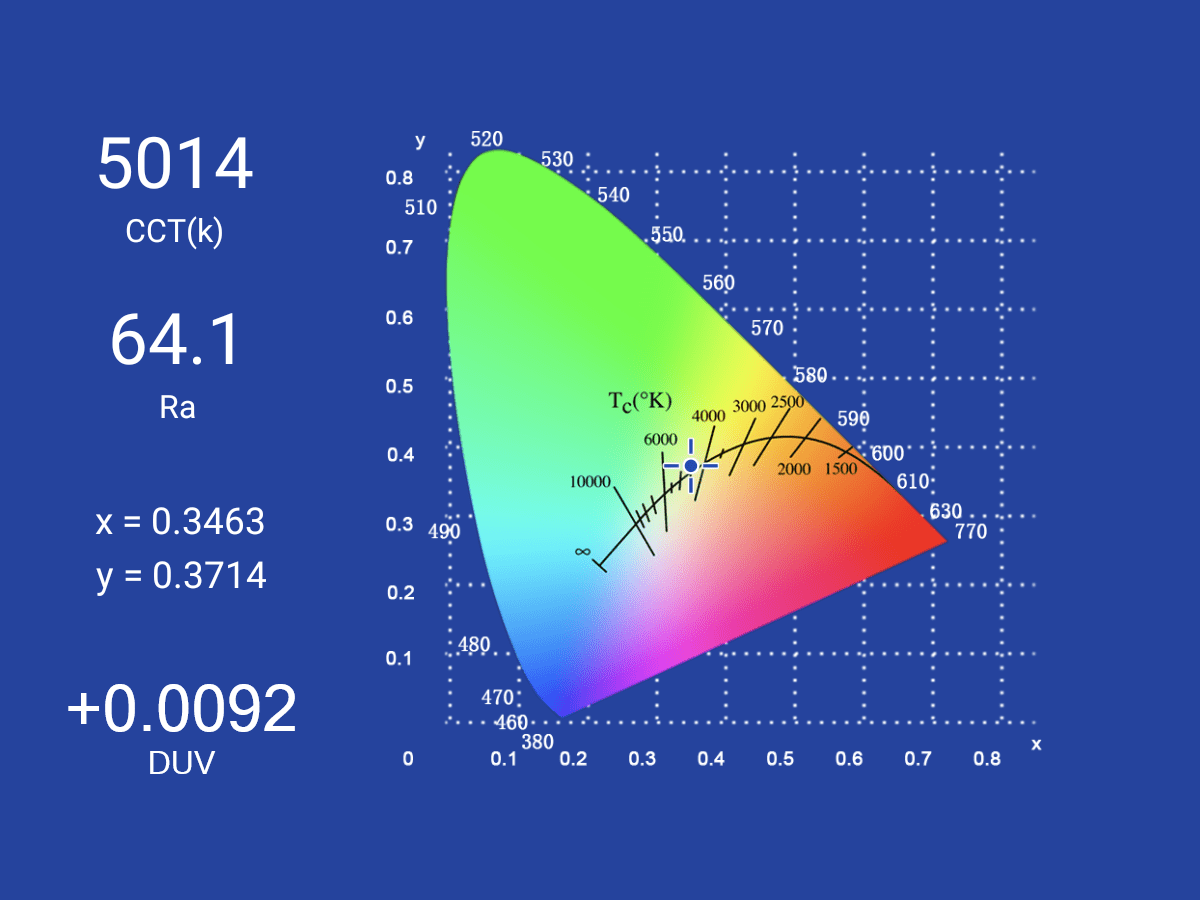
Dimensions and size comparison
Dimensions:
| Fenix E-CP | Millimeters | Inches |
|---|---|---|
| Length | 138 mm | 5.4 in |
| Head diameter | 28 mm | 1.1 in |
| Body diameter | 28 mm | 1.1 in |
Dimensions are rounded to the nearest millimeter, and to the nearest tenth of an Inch.
Weight:
| Weight | Weight in grams | Weight in Oz |
|---|---|---|
| With built-in battery | 170 g | 6.0 oz |
Weight is rounded to the nearest gram, and to the nearest tenth of an Oz.
Flashlight size comparison with its competition:
Group 1: Fenix PD2R, Fenix E-CP, Fenix HT30R
Group 2: Baseus M25P (10,000 mAh power bank), Fenix E-CP, Anker Astro Mini 2nd Gen (3200 mAh power bank)
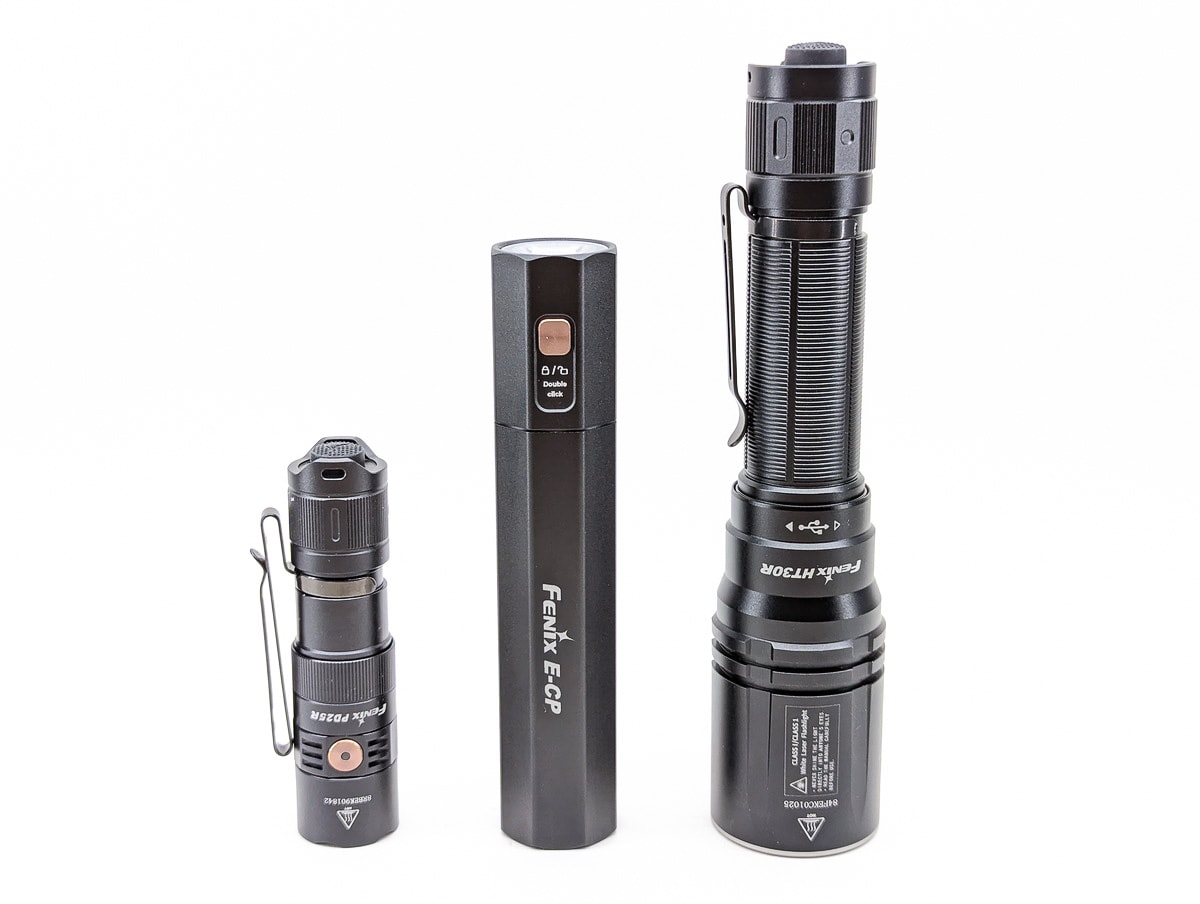
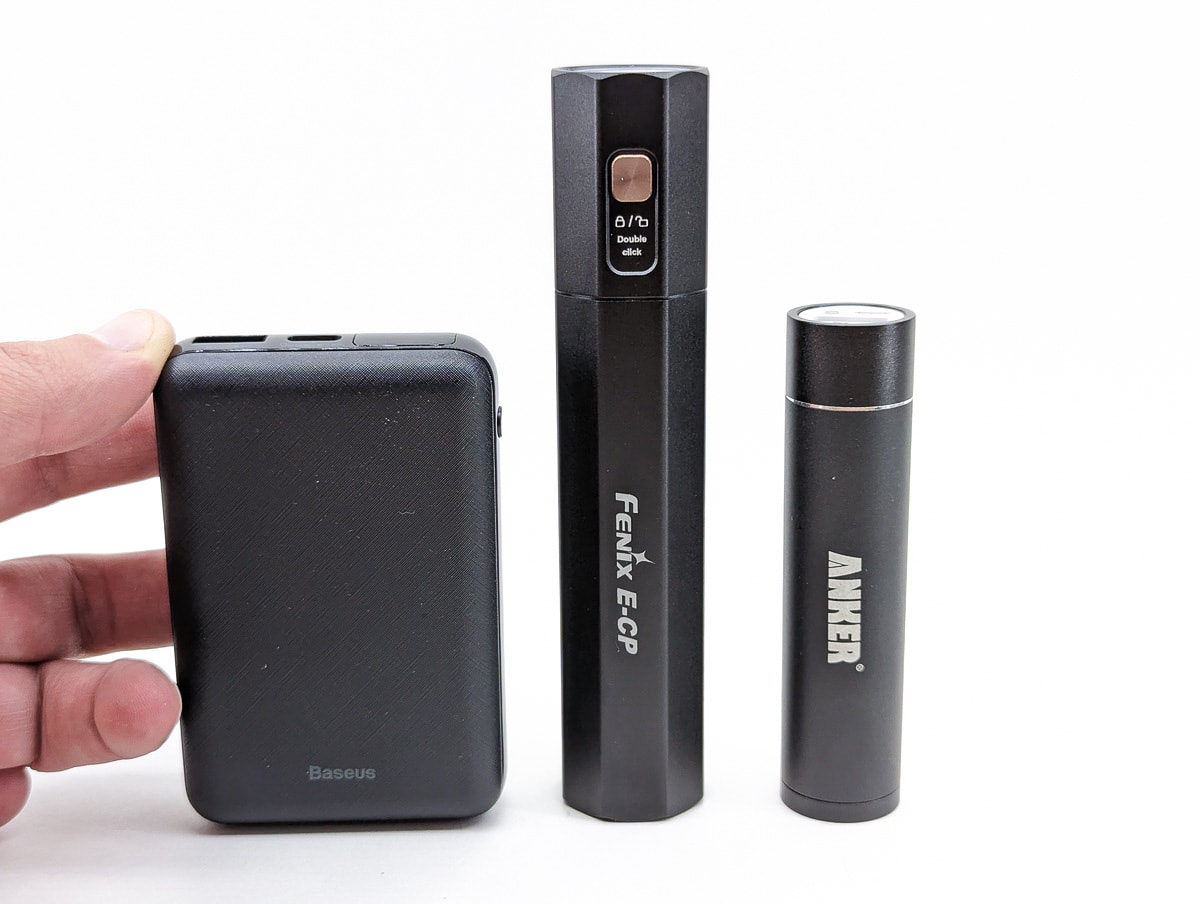
Driver & User Interface:
The UI of the E-CP is familiar if you’ve ever used a single e-switch light from Fenix’s E (EDC) series. In essence, it’s a hold-for-on / hold-for-off arrangement. Not my favorite, but very easy to use.
Available modes:
- Eco, Low, Medium, High, Turbo
Available blinky modes:
- Strobe
From OFF:
- Press and hold 0.5 sec: turn on
- Press and hold 1.2 sec: Strobe
- Double click: Lockout
From ON:
- Press and hold 0.5 sec: turn off
- Press and hold 1.2 sec: Strobe
- 1 click: change mode (Eco > Low > Med > High > Turbo)
Mode memory:
- Yes, it has mode memory
- Strobe is not memorized
- When turning the light off in Turbo mode, it will revert to High mode
Shortcuts:
- To Strobe: hold the switch 1.2 sec from either On or Off
Low voltage warning:
- With the light switched off, single click the side switch to check the battery status (using the indicator LEDs), which will last for 5 seconds.
- Four lights on: 80% – 100%
- Three lights on: 60% – 80%
- Two lights on: 40% – 60%
- One light on: 20% – 40%
- One light flashes: less than 20%
Strobe/blinkies
- There is a Strobe mode that can be access with a long hold (1.2 seconds) from either On or Off
Lock-out mode:
- Yes, double click from Off to activate electronic lockout. Double click again to exit.
PWM
- There is no PWM
Additional info on the UI:
- Like I said in the intro to the UI section, the Fenix e-switch UI isn’t my favorite, but if you’re used to the UI from other Fenix lights (like my trusty E25), you’ll feel right at home.
Batteries & Charging
The Fenix E-CP is sealed up, and that means a built-in battery. Clocking in at 5000 mAh (per the specs), I would wager that there’s a 21700 inside. The E-CP charges via a USB-C port, including compatibility with USB-C to USB-C cables. As written on the side of the light, it supports several charging voltages, including:
- 5V up to 2.4A (12W)
- 9V up to 2A (18W)
- 12V up to 1.5A (18W)
In my testing, I observed a charge rate of 22.3W (1.9A at 11.9V).
One of the biggest selling points of the Fenix E-CP (besides being an EDC flashlight) is the power bank functionality. It can charge devices like your cell phone from either the USB-C port or the full-size USB-A port. The power bank specs are listed on the side of the light, right underneath the input specs. The USB-C and USB-A powers are listed out separately, but they’re the same and they’re the same as the charging specs listed above (3 different voltages, up to 18 watts).
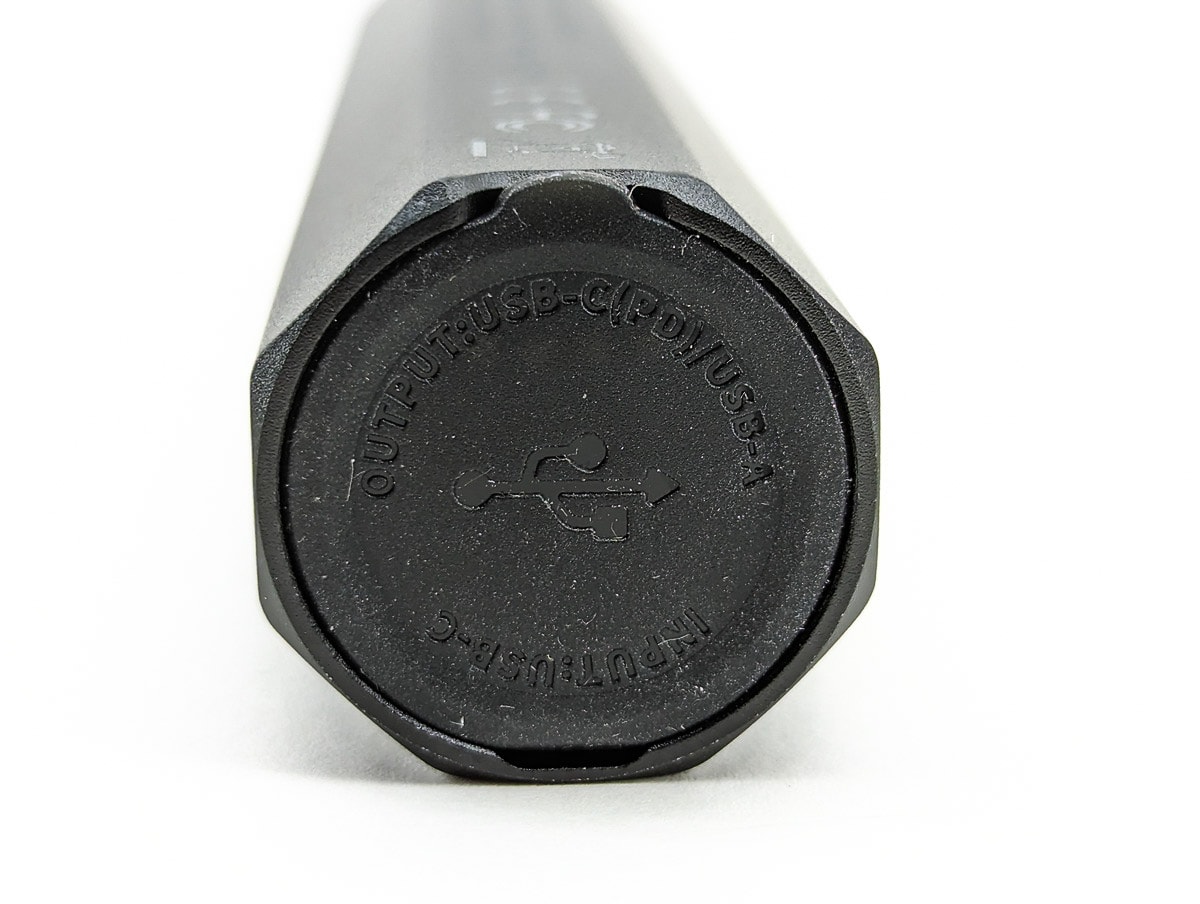
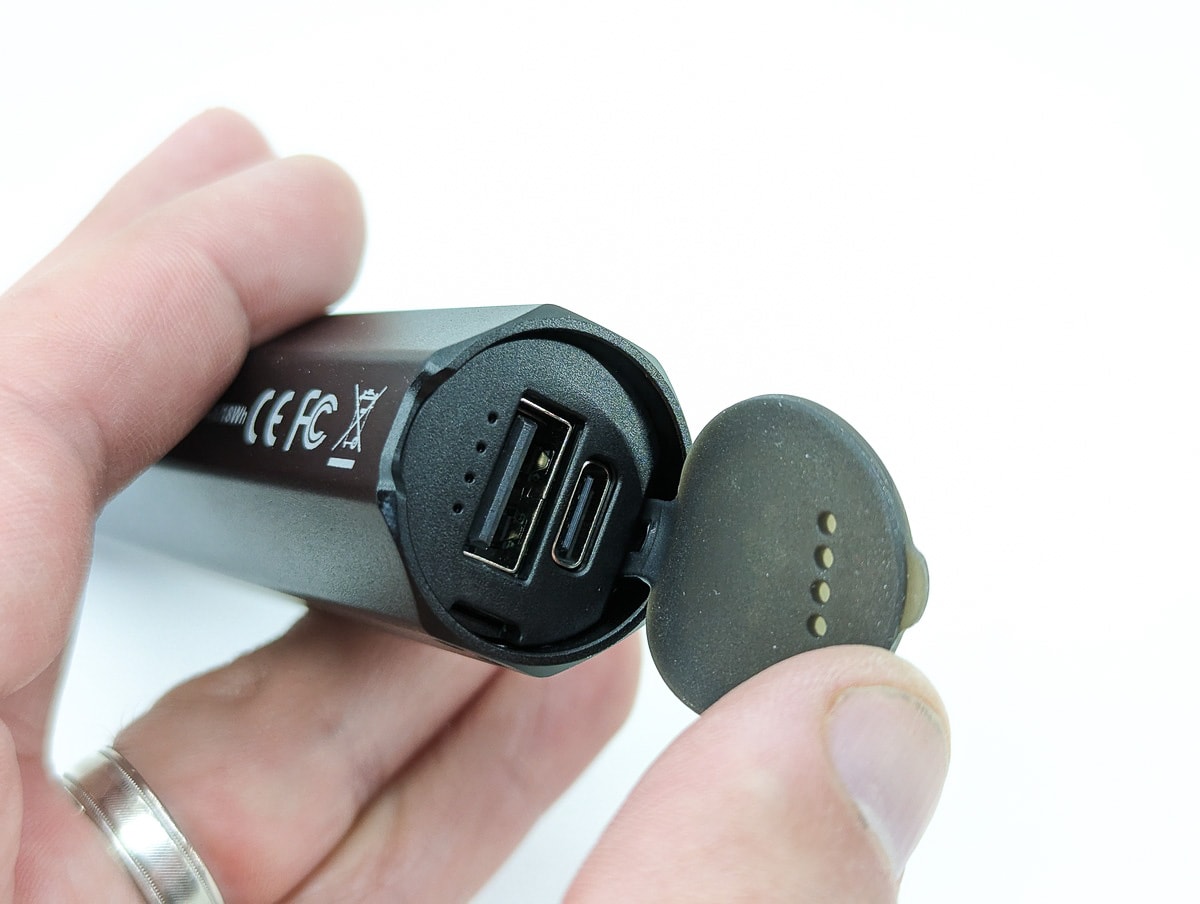
Performance test
Lux was measured by a UNI-T UT383 BT at 5 meters. Lumens were measured in a homemade lumen tube using a TSL2591 sensor, calibrated with a Maukka calibration light. The temperature was monitored with a MLX90614 IR temperature sensor. The built-in battery was (of course) used for testing.
Lumen measurements (for each mode)
| Mode | Specified | turn on | 30 sec | 10 minutes |
|---|---|---|---|---|
| Eco | 3 | 2.4 lm | 2.4 lm | – |
| Low | 30 | 28 lm | 28 lm | – |
| Medium | 150 | 122 lm | 122 lm | 121 lm |
| High | 350 | 356 lm | 353 lm | 351 lm |
| Turbo | 1600 lm | 1595 lm | 1554 lm | 989 lm |
Parasitic drain:
- N/A (couldn’t test because of built-in battery)
Battery Life: Runtime graphs
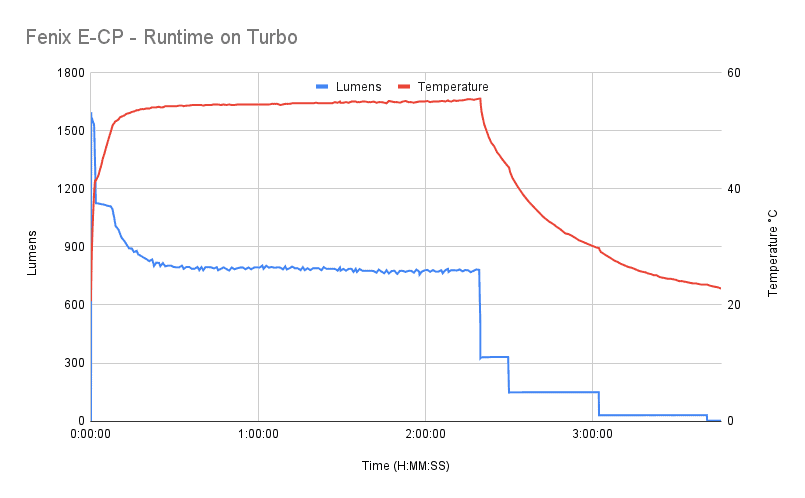
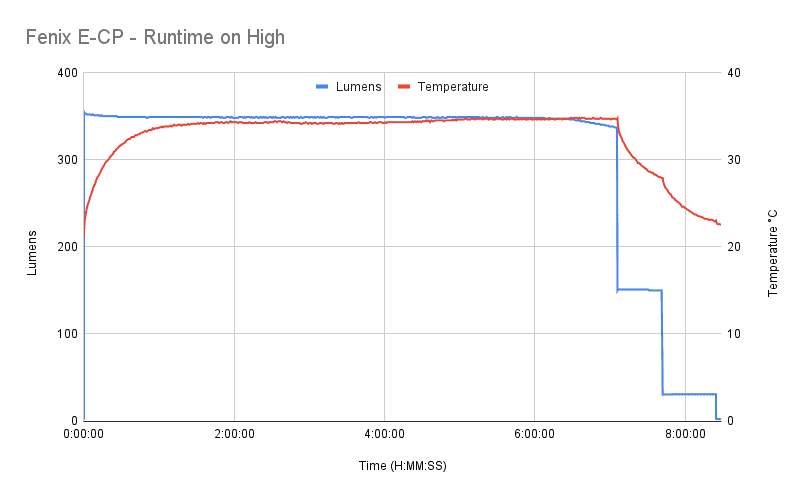

| Mode | Specified | Measured runtime ANSI | Time till end of test |
|---|---|---|---|
| Eco | 504 hr | – | – |
| Low | 84 hr | – | – |
| Medium | 20 hr | 17 hr 38 min | 17 hr 40 min |
| High | 8 hr 30 min | 7 hr 42 min | 9 hr 38 min |
| Turbo | 2 hr 30 min | 2 hr 30 min | 5 hr 21 min |
In general, the tests were very close to what Fenix layed out in the spec sheet. That’s pretty much what I expect from Fenix; they generally put out truthful numbers inline with the ANSI FL1 standards. I did stop the runtime tests before the lights completely shut off. They were continuing to run at 2 lumens for a very long time.
ANSI FL1 standards: The runtime is measured until the light drops to 10% of its initial output (30 seconds after turning on). This does not mean that the flashlight is not usable anymore. The last column shows how long the light actually works till it shuts off. If there is a + symbol, it means that the test was stopped at that particular point, but the light was actually still running. This happens on certain occasions, with certain drivers, firmware, or batteries.
Peak beam intensity and beam distance measurements
Measured at 5 meters after 30 seconds with my UNI-T UT383 BT
| Mode | Specified | Candela measured | Meters | Yards |
|---|---|---|---|---|
| Eco | 25 cd | – | – | – |
| Low | 270 cd | 275 | 33 | 36 |
| Medium | 1200 cd | 1275 | 71 | 78 |
| High | 2750 cd | 3000 | 110 | 120 |
| Turbo | 12,400 cd | 14,000 cd | 237 | 259 |
Extra info: Peak beam distance according to ANSI FL1 standards: The calculated value of distance in meters at which the flashlight produces a light intensity of 0.25 lux. (0.25 lux is about the brightness of a full moon shining on an object). Columns Meters and Yards show rounded numbers.
Beamshots
Camera settings and distance:
Beam shots of the building are taken at 15 m (16 yd) using a Pixel 7 set to ISO 200 with 1/10 second exposure time.
Beam shots of the playset are taken at 30 m (33 yd) using a Pixel 7 set to ISO 200 with 1/2 second exposure time. The trees in the background are around 65 m away.
Beamshots of the following flashlights compared:
- Fenix E-CP
- Fenix PD36R Pro
- Olight Baton 3 Pro
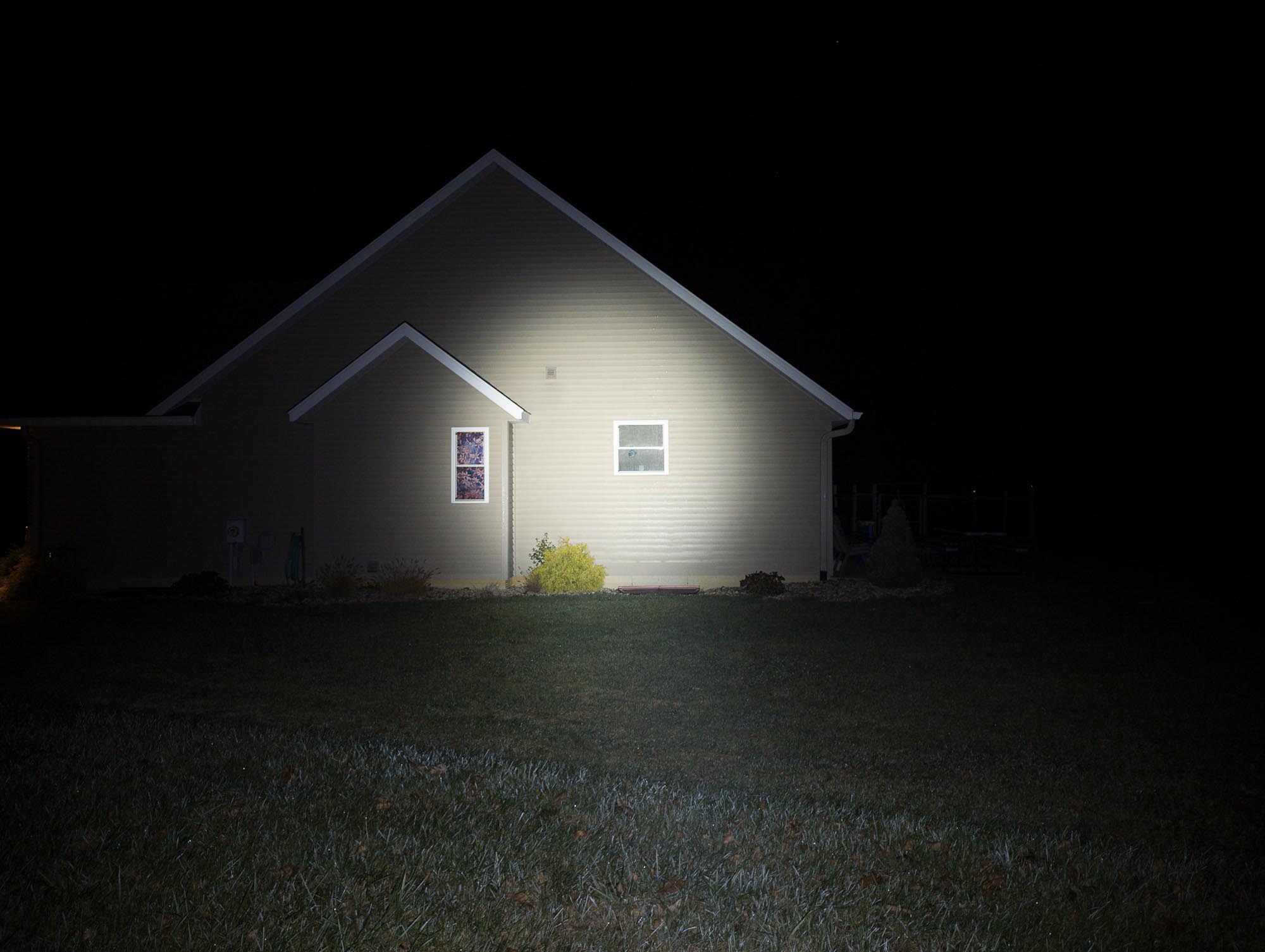
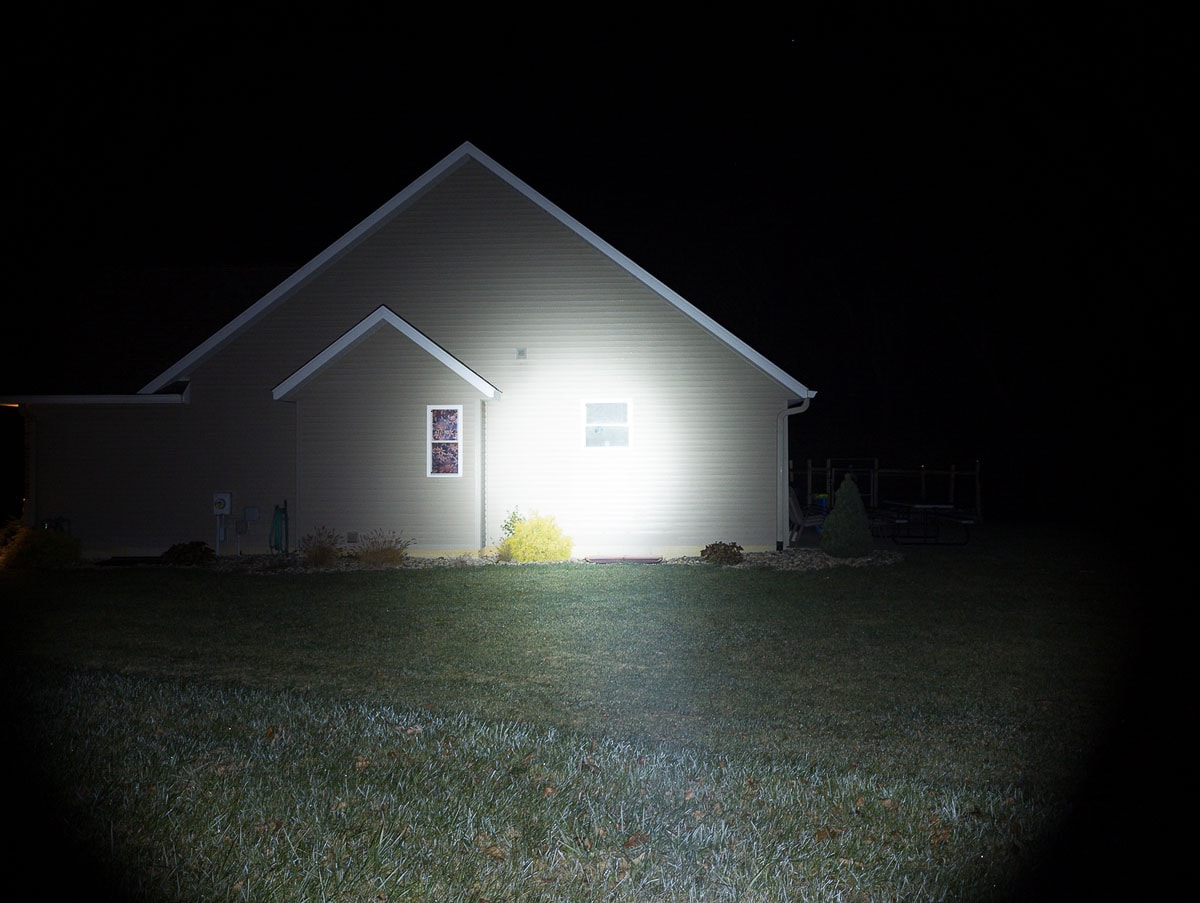
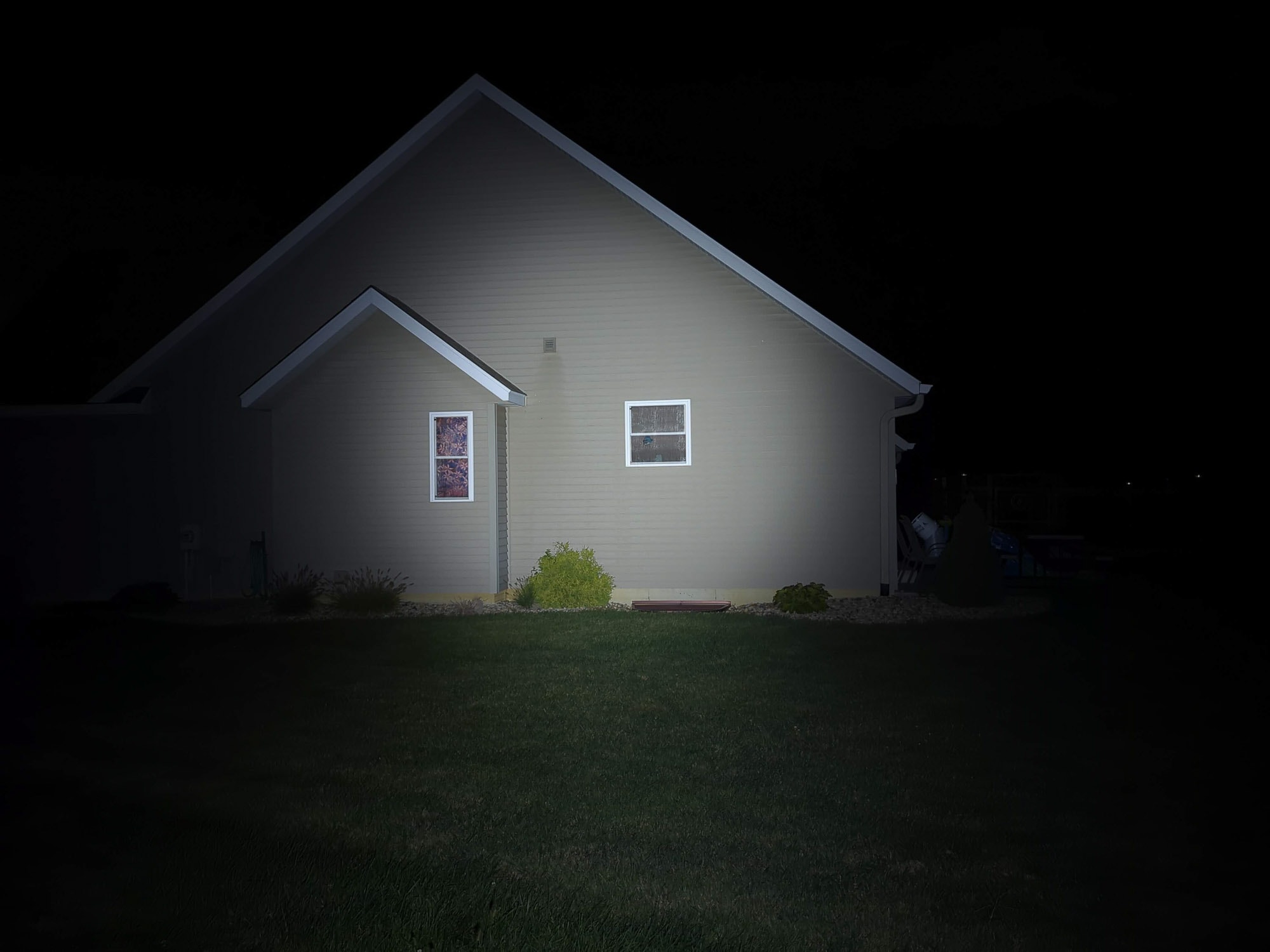
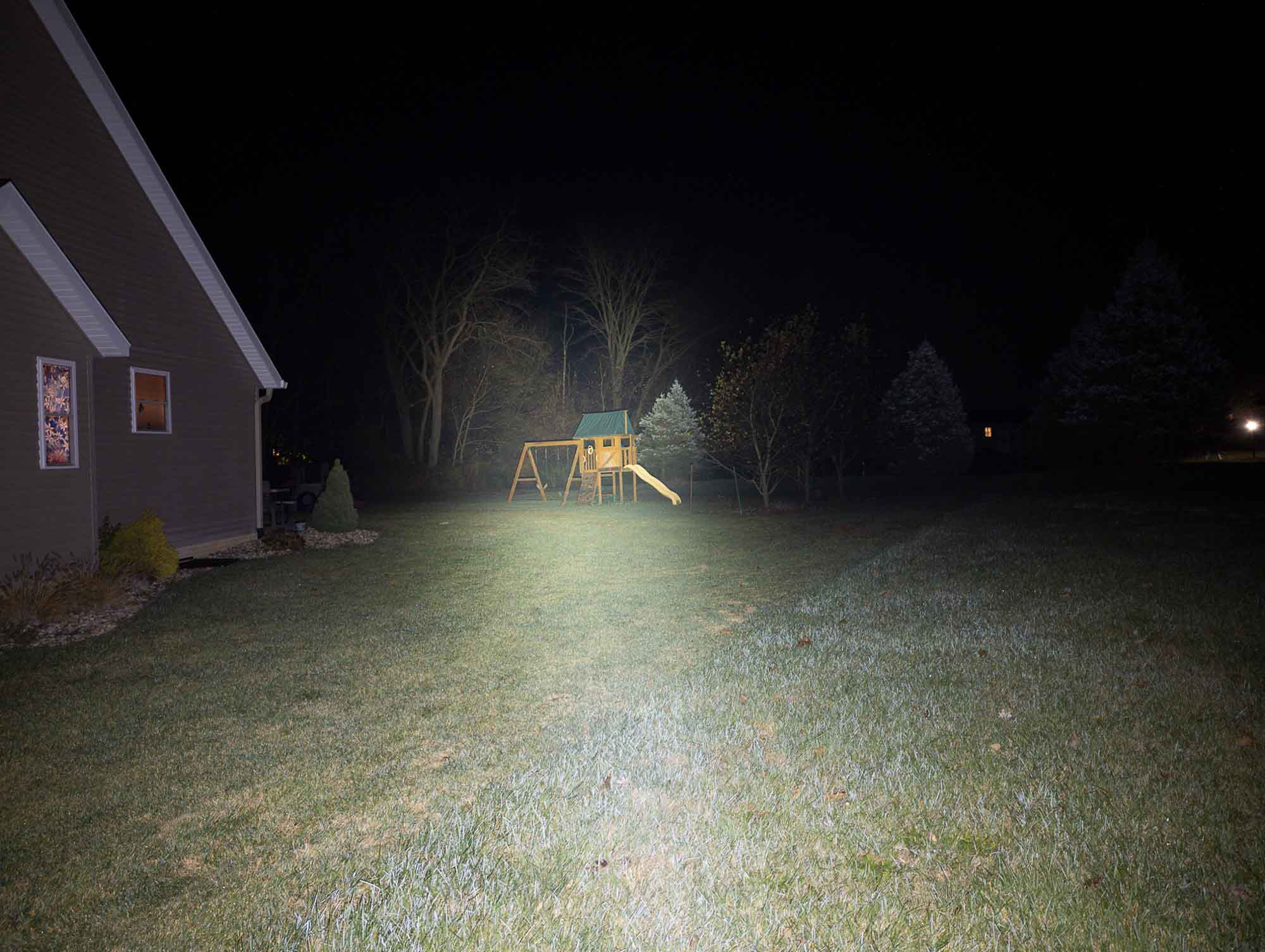
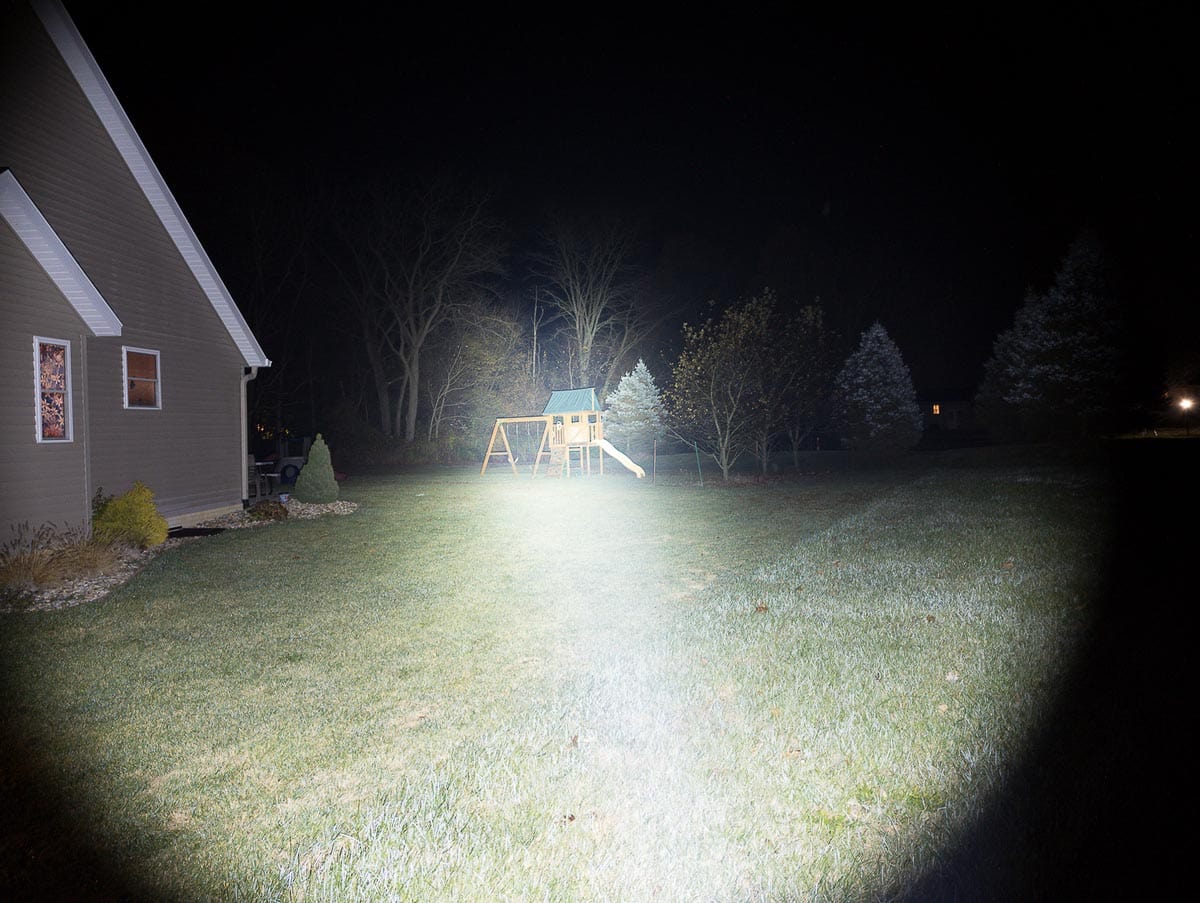
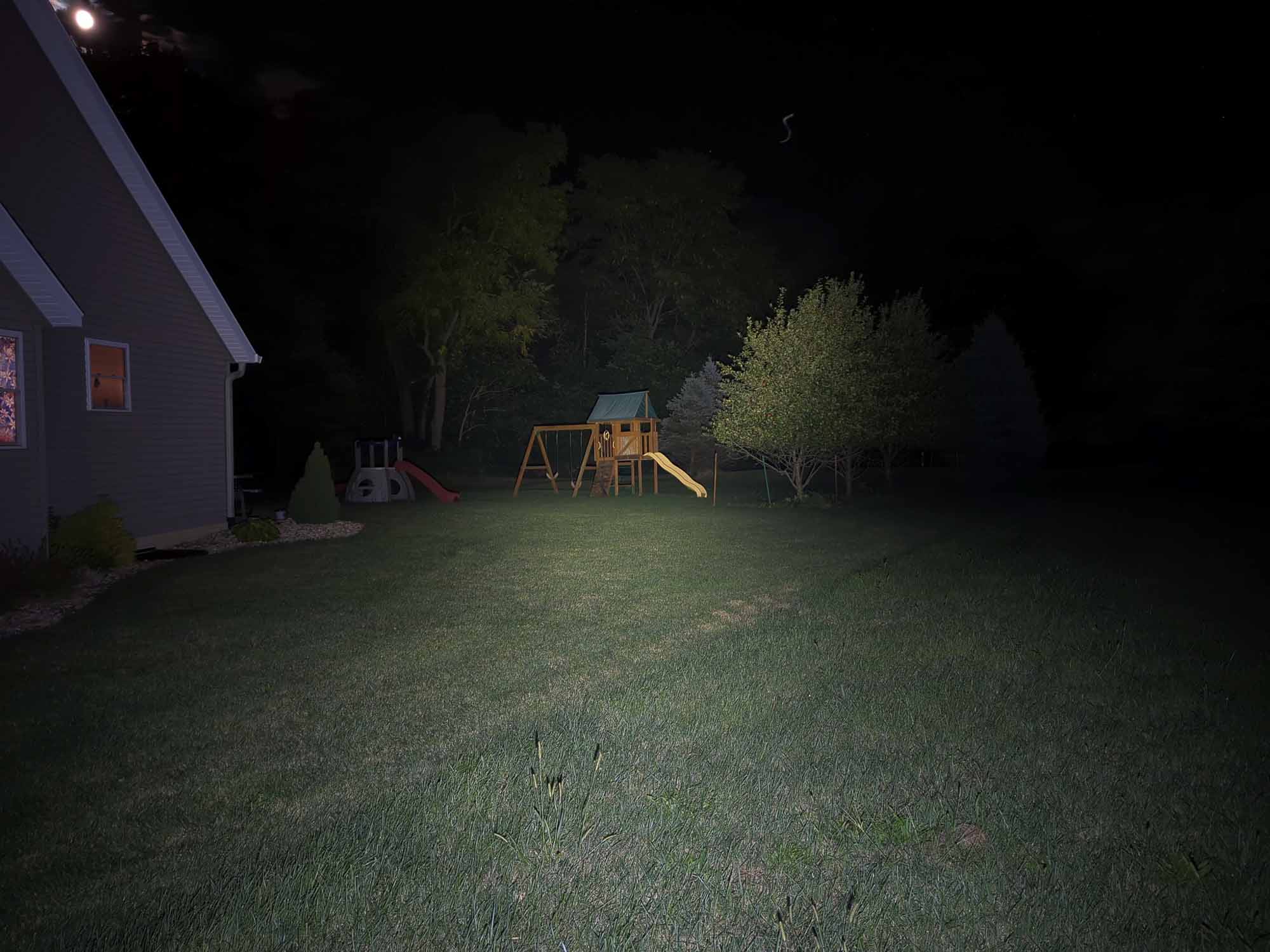
Disclaimer: This flashlight was sent to me for review at no cost by Fenix Lighting US. I have not been paid to review, nor have I been holding back on problems or defects.
Final Verdict
Pros
- Great build quality
- Powerful power bank functionality
- Nice regulation
- Well spaced modes
- Easy to use
Cons
- LED tint is greenish (SST40)
- No option for a pocket clip
Explanation on star ratings:
1: Avoid: a match would be a better choice – 2: Poor: significant defect or issues; almost unusable – 3: Average: some defects or issues; but still usable 4: Good: recommended (minor issues) – 5: Great: highly recommended

4.5 stars: ★★★★⋆
If you frequently need both a flashlight and a power bank, but like to pack light, the Fenix E-CP may be just what you need. It’s built very well, puts out a respectable amount of light, and can pump out 18W when used as a power bank. From the few flashlight / power bank combos that I’ve seen, usually they’re a decent power bank with a really weak flashlight, or a nice flashlight that does “ok” as a power bank in a pinch. The Fenix E-CP seems to excel at being both a flashlight and a power bank (as long as you don’t mind the tint of the SST40).
Buy Fenix E-CP for discount
Get 10% off every purchase at Fenix Lighting US, by using our exclusive 1lumen discount code: 1lumen10
1lumen selects and reviews products personally. We may earn affiliate commissions through our links, which help support our testing.